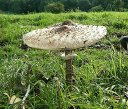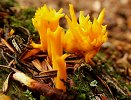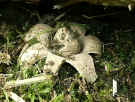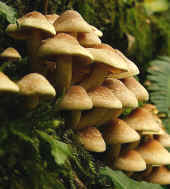 |
 |
 |
 |
 |
 |
 |
 |
There is an enormous number and variety of species of fungi. The mushrooms and toadstools which are usually seen are the fruiting bodies produced for reproductive purposes. These fruiting bodies are common especially in woodlands in the Autumn. They are very varied in appearance. Fungi colonize different habitats. In a woodland most will be found on dead wood or on trees. The degree of dampness influences the success of the fungus. Fungi play an essential role in decay. They are therefore one of the decomposers. By breaking down organic material they make the nutrients available to growing plants. In this way they are an important part of the Nutrient Cycle. Fungi can not use light to make food as they lack the green pigment chlorophyll. Thus unlike green plants, fungi can live without light. The fungus organism itself is made up of threadlike tubes known as hyphae. These join together to form a mycellium. Mycelia are usually found in the ground or within dead or living organisms such as wood. Fungi are eaten by animals, especially slugs. Thus they form part of the food chain.
|
